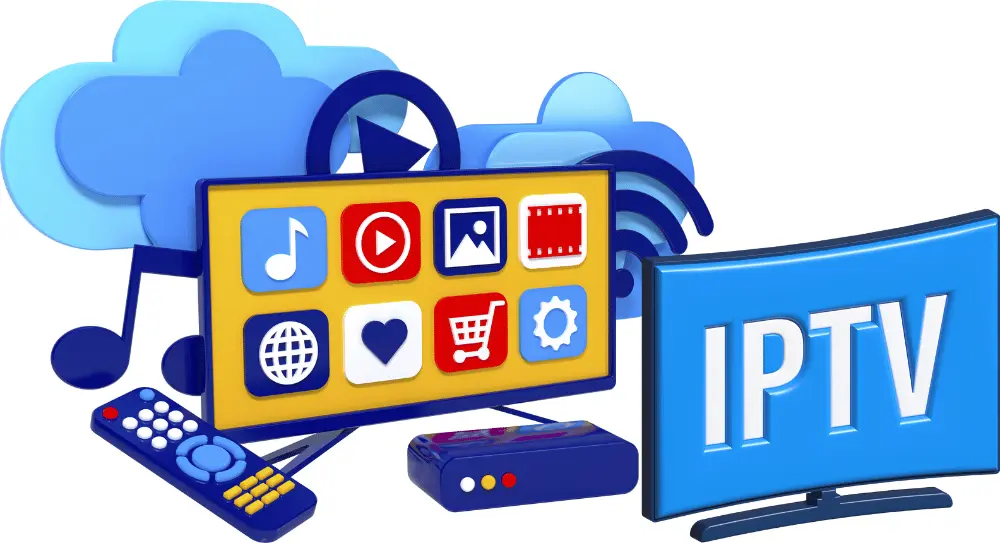IPTV: Why Should You Switch to Delivering Content via the Internet?
By TOI Desk Report
May 10, 2023
Update on : May 10, 2023

Traditional television is vanishing from viewers’ homes step-by-step, getting replaced by online streaming services. This happens for multiple reasons: although plenty of channels broadcast varied programs and shows, a user can watch them only at home on a TV set at a fixed time.
This is where IPTV platforms come to the forefront, providing convenience and flexibility to their customers. The technology allows people to access any kind of content whenever and wherever they want. It is what makes online streaming services so popular and attractive to viewers. But let’s dive deeper into the detail.
What is IPTV?
For content consumers, IPTV ensures a result similar to traditional television: people watch a requested video on a receiving device. However, the delivery method and the way everything is arranged are different.
Traditional television utilizes satellite dishes or fiber-optic cable to transmit communicated signals, while IPTV leverages various types of internet broadband for content delivery. It is a whole new lot of opportunities for IPTV operators, broadcasters, and content creators when it comes to reaching customers, communicating with them, and monetizing video content.
IPTV brought a number of changes to the storage of video content, its processing, and delivery. A customer needs an interface with a list of videos you have on your service. When they want to watch a particular video, they click on it, and the rest happens under the hood.
The requested video should be encoded for convenient delivery through the Internet connection. After that, it should be transcoded to meet the requirements of a receiving device. This is necessary as viewers would want to watch content in HD or 4K, and some of them would not need such a high video quality.
The IPTV technology allows the delivery of various content formats:
- Pre-recorded videos. They are stored on servers, waiting for viewers to request a particular video. It means that these videos are actually delivered on a viewer’s demand via IPTV. Video-on-demand (VOD) services are similar to libraries: when you want a particular piece of content to watch, you enter a service and choose what you want. They are available at any time, avoiding a fixed schedule.
- Live videos. A content provider can utilize IP multicasting for delivering live videos to viewers in real time. This is suitable for webinars, live events, direct communication with customers, and many other occasions.
- Time-shifted TV. IPTV allows people to watch TV programs after they are aired. Unlike VOD streaming, when videos are always available for viewing, time-shifted TV or catch-up TV lets consumers re-watch videos within a specific time frame. The period can last from 24 hours to several days.
What are the Benefits and Drawbacks of IPTV?
As with any other technology, IPTV also has its benefits, as well as drawbacks.
What are the benefits?
- You don’t need to develop everything on your own. There are multiple companies that specialize in designing IPTV solutions in the market. You can obtain the right software and hardware that already includes everything necessary for content delivery and monetization.
- You have multiple opportunities for content monetization. IPTV solution is a tool that also helps you generate revenue by sharing content with viewers. You can sell subscriptions, utilize advertisements or pay-per-view to make money.
- Online streaming services are more attractive to viewers because they offer various content formats and are usually available on multiple platforms and devices, including TVs, mobile phones, tablets, and laptops.
- IPTV streaming services are often less expensive for viewers compared to traditional television. A monthly subscription to a streaming service can cost around $20, while cable or satellite provider often charges $50 and more.
What are the drawbacks?
- Technical issues might occur. The quality of a picture and video loading speed usually depends on the internet connection. A network overload might cause a slowdown in video transmission.
Final Thoughts
IPTV is certainly a major change in the media industry. It allows companies and organizations to deliver videos directly to viewers’ devices. It means that you can communicate with consumers, building strong relationships with them. Moreover, IPTV allows you to generate revenue by producing content and sharing it via IPTV services.
Related More Articles: IPTV: Why Should You Switch to Delivering Content via the Internet?















